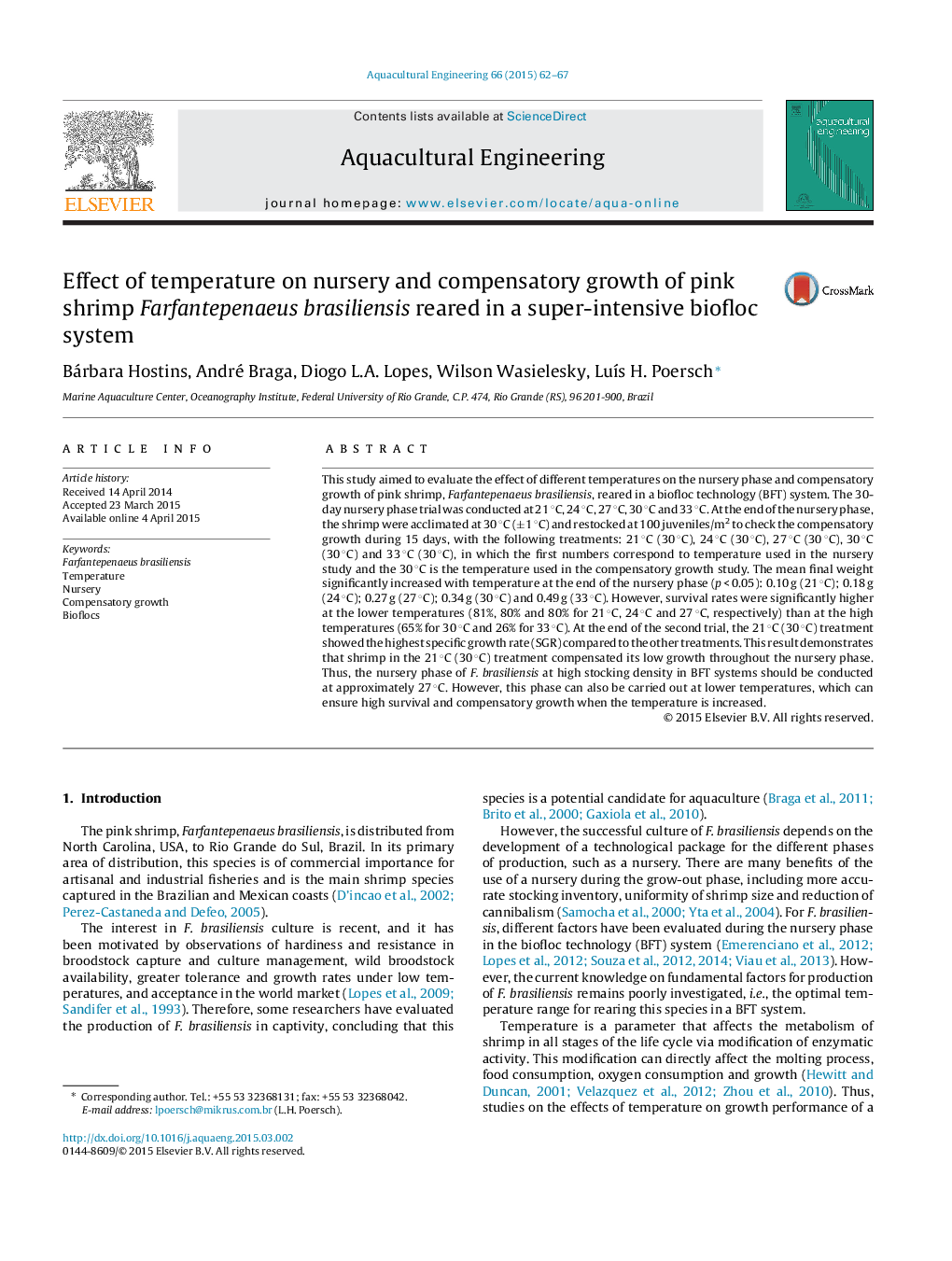| Article ID | Journal | Published Year | Pages | File Type |
|---|---|---|---|---|
| 4527183 | Aquacultural Engineering | 2015 | 6 Pages |
•Nursery of Farfantepenaeus brasiliensis at different temperatures was evaluated.•Growth of shrimp nursed at different temperatures was evaluated at 30 °C.•In the nursery study, final weight was significantly higher at high temperatures.•Survival was significantly higher at low temperatures.•Shrimp nursed at 21 °C compensated its low growth when the temperature is increased.
This study aimed to evaluate the effect of different temperatures on the nursery phase and compensatory growth of pink shrimp, Farfantepenaeus brasiliensis, reared in a biofloc technology (BFT) system. The 30-day nursery phase trial was conducted at 21 °C, 24 °C, 27 °C, 30 °C and 33 °C. At the end of the nursery phase, the shrimp were acclimated at 30 °C (±1 °C) and restocked at 100 juveniles/m2 to check the compensatory growth during 15 days, with the following treatments: 21 °C (30 °C), 24 °C (30 °C), 27 °C (30 °C), 30 °C (30 °C) and 33 °C (30 °C), in which the first numbers correspond to temperature used in the nursery study and the 30 °C is the temperature used in the compensatory growth study. The mean final weight significantly increased with temperature at the end of the nursery phase (p < 0.05): 0.10 g (21 °C); 0.18 g (24 °C); 0.27 g (27 °C); 0.34 g (30 °C) and 0.49 g (33 °C). However, survival rates were significantly higher at the lower temperatures (81%, 80% and 80% for 21 °C, 24 °C and 27 °C, respectively) than at the high temperatures (65% for 30 °C and 26% for 33 °C). At the end of the second trial, the 21 °C (30 °C) treatment showed the highest specific growth rate (SGR) compared to the other treatments. This result demonstrates that shrimp in the 21 °C (30 °C) treatment compensated its low growth throughout the nursery phase. Thus, the nursery phase of F. brasiliensis at high stocking density in BFT systems should be conducted at approximately 27 °C. However, this phase can also be carried out at lower temperatures, which can ensure high survival and compensatory growth when the temperature is increased.
